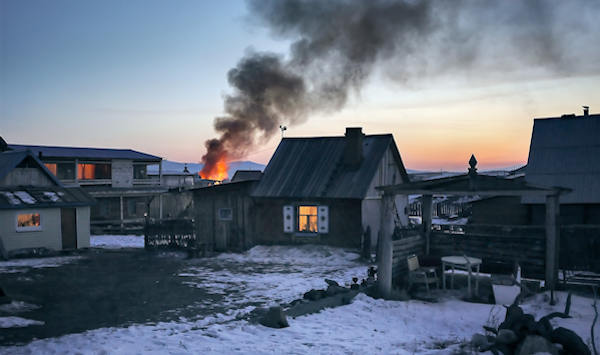
Fire prevention is an important part of keeping your home and loved ones safe. Taking diligent steps to prevent a fire from starting can help minimize the risk of loss of life and severe damage. This article is meant to help guide you by providing some key tips for fire prevention in the home.
Having fully functioning smoke detectors in their proper places in your home is the most important aspect of fire safety. They will save lives in an emergency and are part of the building codes in virtually every town and village in the United States. Having a smoke detector
What are the best type of smoke detectors to use in my home?
The best type of smoke detectors to use in a home are ionization smoke detectors. Ionization smoke detectors are more sensitive to smaller particles of smoke, which can be produced by fast-burning fires, and are generally more reliable than other types of smoke detectors. It is important to make sure that the smoke detectors are properly installed and maintained to ensure that they are working properly.
In addition to ionization smoke detectors, there are also photoelectric smoke detectors. These types of smoke detectors are more sensitive to larger particles of smoke and are better at detecting smoldering fires. Both types of smoke detectors can be used in a home, but it is generally recommended to use ionization smoke detectors as they are found to be the most reliable.
There are several steps you can take to help prevent a fire in your home. Some of these include making sure to properly use and maintain any electrical appliances, keeping flammable materials away from heat sources, and regularly checking and replacing smoke alarm batteries as well as the smoke alarms themselves when the time comes. Taking these precautions can help reduce the risk of a home fire and keep your family safe.
Where should I place the smoke detectors in my home?
It is of vital importance to understand how the placement of your smoke detectors will affect their performance in an emergency. There are several aspects that need to be considered…
According to the National Fire Protection Association – NFPA
- Install smoke alarms inside each bedroom, outside each sleeping area and on every level of the home, including the basement.
- On levels without bedrooms, install alarms in the living room (or den or family room) or near the stairway to the upper level, or in both locations.
- Smoke alarms installed in the basement should be installed on the ceiling at the bottom of the stairs leading to the next level.
- Smoke alarms should be installed at least 10 feet (3 meters) from a cooking appliance to minimize false alarms when cooking.
- Mount smoke alarms high on walls or ceilings (remember, smoke rises). Wall-mounted alarms should be installed not more than 12 inches away from the ceiling (to the top of the alarm).
- If you have ceilings that are pitched, install the alarm within 3 feet of the peak but not within the apex of the peak (four inches down from the peak).
- Don’t install smoke alarms near windows, doors, or ducts where drafts might interfere with their operation.
- Never paint smoke alarms. Paint, stickers, or other decorations could keep the alarms from working.
- For the best protection, interconnect all smoke alarms. When one smoke alarm sounds they all sound. Interconnection can be done using hard-wiring or wireless technology.
- When interconnected smoke alarms are installed, it is important that all of the alarms are from the same manufacturer. If the alarms are not compatible, they may not sound.
- There are two types of smoke alarms – ionization and photoelectric. An ionization smoke alarm is generally more responsive to flaming fires, and a photoelectric smoke alarm is generally more responsive to smoldering fires. For the best protection, both types of alarms or combination ionization-photoelectric alarms, also known as dual sensor smoke alarms, are recommended.
- Keep manufacturer’s instructions for reference.
Interconnected smoke alarms greatly increase safety in your home
Interconnected smoke alarms increase fire safety in the home by providing earlier warning of a fire. When one alarm is triggered, all interconnected alarms will sound, giving occupants more time to evacuate the home. This is especially important in larger homes where smoke may be slow to travel from one area to another. Additionally, interconnected smoke alarms provide peace of mind that the entire home is being monitored for smoke, so occupants don’t have to to be concerned about any area becoming undetected.
From the National Fire Protection Association -(NFPA)
In a Consumer Product Safety Commission (CPSC) survey of households with any fires, including fires in which the fire department was not called, interconnected smoke alarms were more likely to operate and alert occupants to a fire.1 People may know about a fire without hearing a smoke alarm.
- When smoke alarms (interconnected or not) were on all floors, they sounded in 37% of fires and alerted occupants in 15%.
- When smoke alarms were not on all floors, they sounded in only 4% of the fires and alerted occupants in only 2%.
- In homes that had interconnected smoke alarms, the alarms sounded in half (53%) of the fires and alerted people in one-quarter (26%) of the fires.
Fire Extinguishers

What are the best types of fire extinguishers for a home?
The best type of fire extinguishers for a home are dry chemical fire extinguishers. These fire extinguishers are designed to be safe and effective for use in homes, and they are effective against most common fires. They should be placed in easily accessible locations throughout the home and can be used to quickly put out a fire before it spreads. It is also important to ensure that everyone in the home is familiar with fire extinguishers – where they are and how to use them. Fire extinguishers have a limited lifespan. It is vital that they be changed out regularly. Most come with dated tags or stamps on them stating the date of manufacture along with the stated lifespan of the unit.
What are the best types of fire extinguishers for a kitchen?
For a kitchen, the best type of fire extinguisher is a Class K fire extinguisher. These fire extinguishers are designed to be used on fires involving cooking oils and fats, which can be common in home kitchens. Class K fire extinguishers are filled with an extinguishing agent that is designed to quickly put out these types of fires. They should be located near the kitchen and everyone in the home should be familiar with how to use them in the event of a fire.
Having a home fire escape plan is essential for ensuring the safety of everyone in the home in the event of a fire. It is important to identify all possible exits and obstacles, establish a designated meeting place, and have an emergency contact. It is also important to practice the plan regularly and make sure everyone in the home is familiar with it. Additionally, having the proper type of smoke detectors and fire extinguishers can be helpful to prevent and put out fires. Taking all of these precautions can help reduce the risk of injury or death in the event of a home fire.
Conclusion
Fire Prevention Tips:
It is important to properly use and maintain any electrical appliances, and electrical outlets, keep flammable materials away from heat sources, and regularly check and replace smoke alarm batteries. It is also important to have the proper type of smoke detectors and fire extinguishers in the home and to practice your home fire escape plan regularly. Taking all of these precautions can help reduce the risk of injury or death in the event of a home fire.
What is the importance of keeping flammables away from heat sources?
Keeping flammable materials away from heat sources is essential for fire prevention. Flammable materials such as fabrics and paper can easily catch fire when exposed to heat, so it is important to keep them away from open flames, hot surfaces, and other heat sources. This includes keeping flammable materials away from stoves, space heaters, and any other appliances that produce heat. Taking this precaution can help reduce the risk of a home fire.
How should I store gasoline and other accelerants at my home?
Gasoline should always be stored safely and securely away from heat sources and any open flames. It should also be kept in an approved container and stored in a cool, dry place. It is important to make sure that the container is clearly labeled and that the lid is securely closed when not in use. Taking these precautions can help reduce the risk of an accidental fire caused by the improper storage of gasoline.
An Important Word About Lithium Ion Batteries and Fire Potential and Prevention
While lithium batteries are normally safe, they may cause injury if they have design defects, are made of low quality materials are assembled incorrectly, are used or recharged improperly, or are damaged. In February 2018, the U.S. Consumer Product Safety Commission’s Status Report on High Energy Density Batteries Project reported over 25,000 overheating or fire incidents involving more than 400 types of lithium battery powered consumer products that occurred over a five-year period. (OSHA “Preventing Fire and/or Explosion Injury from Small and Wearable Lithium Battery Powered Devices“, 2021, pp. 1-2)
If batteries are damaged, remove them from service, place in fire resistant container (e.g., metal drum) with sand or other extinguishing agent, and dispose in accordance with local, state, and federal regulations. Contact a local battery recyclingcenter for disposal instructions.. (OSHA “Preventing Fire and/or Explosion Injury from Small and Wearable Lithium Battery Powered Devices“, 2021, pp. 2-3)
1 Michael A. Greene and Craig Andres. 2004-2005 National Sample Survey of Unreported Residential Fires. U.S. Consumer Product Safety Commission, July 2009.
